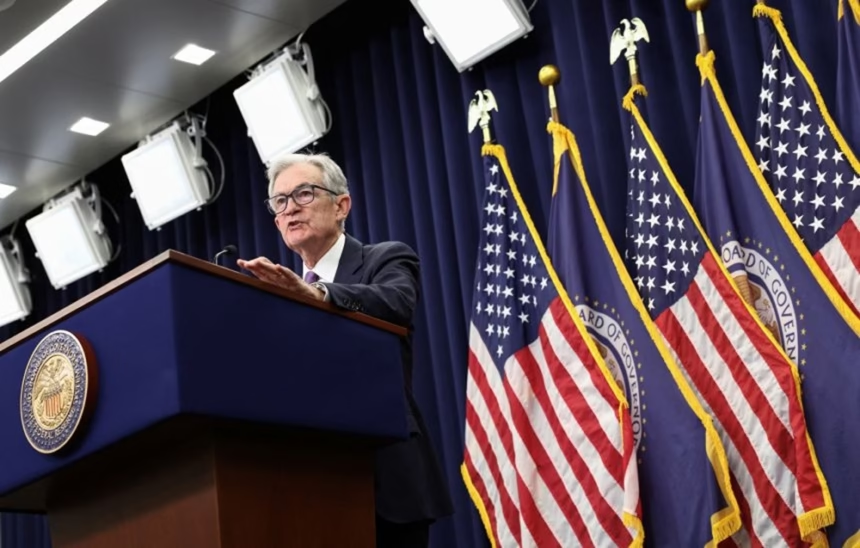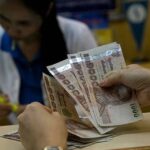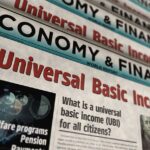BANGKOK – The Fed lowered its policy rate by 25 basis points on Wednesday, taking the target range to 3.75 to 4 per cent, the lowest since 2022. It marked a second straight cut since September, reflecting growing concern about a weaker labour market while inflation stays above the 2 per cent goal. For Thailand, a major exporter facing US tariffs and weak domestic demand, the shift offers some currency relief, but little help on trade.
The move was widely expected, and markets had mostly priced it in. Chair Jerome Powell’s comments stirred fresh uncertainty, as he signalled no firm commitment to another cut in December. Policymakers are split, he said, with a federal government shutdown disrupting key data, including the September jobs report.
The divide was clear. Governor Stephen Miran backed a larger half-point reduction, while Kansas City Fed President Jeffrey Schmid wanted no change. With unemployment drifting higher, and data delayed by the shutdown, the Fed’s focus has tilted toward jobs and away from inflation.
The decision lands amid a period of choppy growth. Tariffs introduced by President Donald Trump to reduce the US trade deficit have pushed up import costs. Powell called the inflation impact “fairly modest,” but persistent.
The Fed also plans to soon halt its balance sheet runoff, after it swelled to about $9 trillion during the pandemic, to ease funding strains that echo the 2019 repo squeeze. Bond yields jumped after the announcement, with the two-year Treasury up 10 basis points, while US stocks ended mixed.
Jobs Take Priority Over Prices in The Fed’s Thinking
Wednesday’s cut reads as insurance against recession. ADP data showed a small gain in private payrolls in mid-October, but federal job losses, about 100,000 in the first eight months, and the shutdown’s effect point to softer conditions.
Inflation has cooled from pandemic highs, but sits near 3 per cent, helped along by tariffs on goods from Thailand, Vietnam and elsewhere. Powell pushed back on the idea that cheaper credit will turbocharge AI spending, noting data centres rely more on cash reserves than bank loans.
For investors, the message is that the Fed’s easing path, which Fitch Ratings sees totalling 100 basis points by 2025, is leaning toward employment over inflation. Politics adds a twist. With Trump attacking Powell and calling for rates below 2 per cent, pressure on the Fed’s independence lingers. “This is not on a preset course,” Powell said, nodding to the fraught backdrop.
In Bangkok, the Fed’s softer stance offered a modest lift. The baht, up nearly 3 per cent against the dollar this year despite weak growth, eased slightly after the decision, trading near 33.20. A smaller US-Thai rate gap should reduce capital outflows, given the Bank of Thailand’s policy rate is 1.5 per cent after four cuts since October 2024.
“The Fed’s moves buy us breathing room on currency defence,” said Sathit Talaengsatya at UOB Thailand. Without that buffer, a stronger baht would squeeze exporters’ margins in a sector that makes up about 60 per cent of GDP.
The wider picture looks tougher. Thailand, the region’s second-largest economy, is on track for 2.2 per cent growth this year, down from 2.7 per cent in 2024, according to the BOT. US tariffs of 19 per cent on Thai goods, reduced from a threatened 36 per cent after talks stalled, have hit electronics, autos and farm exports.
Shipments to the US fell 5 per cent year on year in July, freezing overall trade growth. Tourism, another mainstay, is feeling the pinch from a firmer baht, while Vietnam and others lure short-haul travellers with cheaper deals.
High household debt, nnearly90 per cent of GDP, amplifies the stress. Families with floating-rate loans are sensitive to global rate shifts. Headline inflation was negative in September, at minus 0.2 per cent, below the BOT’s 1 to 3 per cent band and raising deflation worries.
The Fed Shift Draws Capital
New governor Vitai Ratanakorn kept rates unchanged on 8 October in a 5 to 2 vote, citing limited room to act. With growth forecasts cut to 1.6 per cent for 2026, Pantheon Macroeconomics expects two more 25 basis point cuts by mid next year, taking the rate to 1 per cent.
Finance Minister Pichai Chunhavajira has pushed the BOT to ease more, alongside a 3.78 trillion baht budget for 2026 that includes cash support and infrastructure to lift spending. Structural risks are harder to fix.
SCB EIC warns that US protectionism could trim 0.5 percentage points from 2025 growth if counter-tariffs and diverted Chinese goods flood regional markets. SMEs, 99 per cent of Thai firms, are under pressure, with weaker credit quality as borrowing costs weigh.
Across Asean, the Fed’s shift has drawn capital into local markets. Indonesia’s rupiah and the Philippine peso strengthened on inflows, with Manila expected to cut by about 175 basis points by 2025. Thailand benefits less.
Cheaper dollar funding helps service about $170 billion in external debt, but it does not replace lost export orders. Capital Economics warns of a technical recession risk if tourism softens again, after arrivals reached 35 million last year, but short-haul travel fell 10 per cent.
Powell’s guarded tone in December has already trimmed the odds of another cut to about 70 per cent, from 90 per cent. If delayed US data later reveal deeper job weakness, further easing could send more hot money into emerging markets and inflate asset prices. A tariff flare-up could do the opposite, prompting a pause, boosting the dollar and squeezing the baht.
Thai industry leaders are pushing for diversification. Kriengkrai Thiennukul of the Federation of Thai Industries urges a shift toward India, Vietnam and green technology. “Tariffs are the new normal, we cannot wait on Washington,” he said. The Fed’s move offers a short tailwind for Thailand, but lasting gains will depend on faster reform, wider markets and better value in exports, not cheaper money alone.














